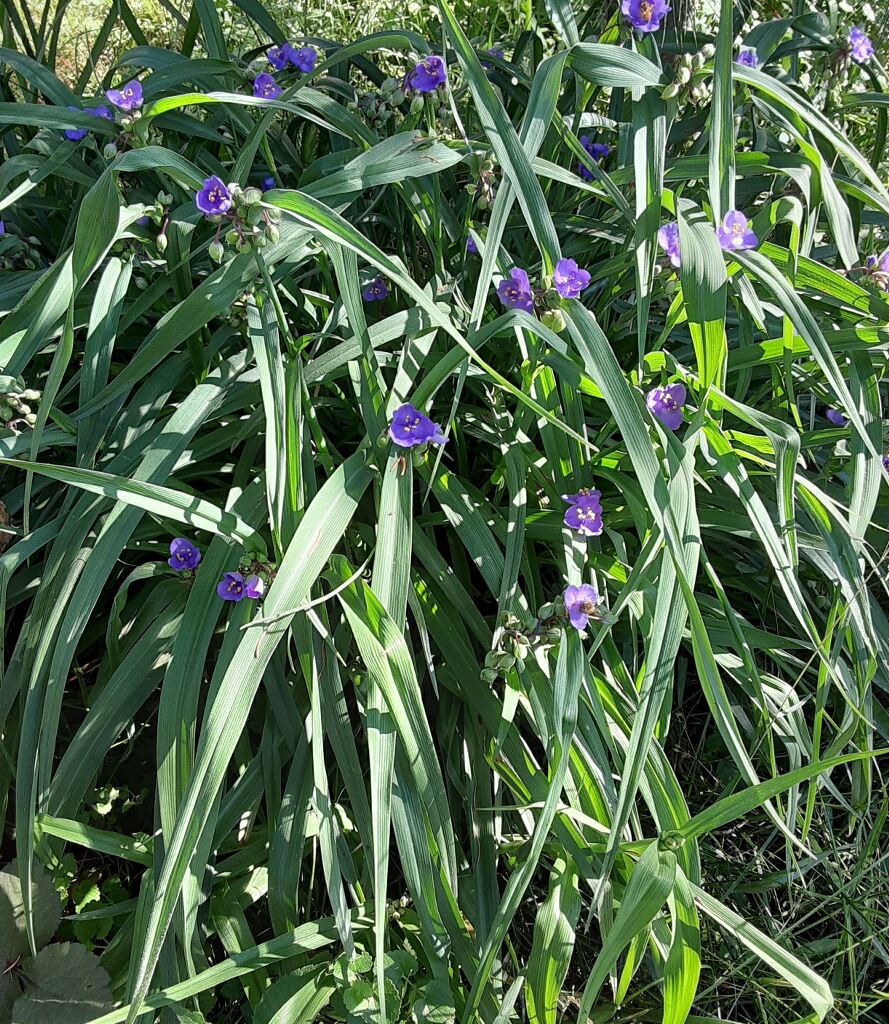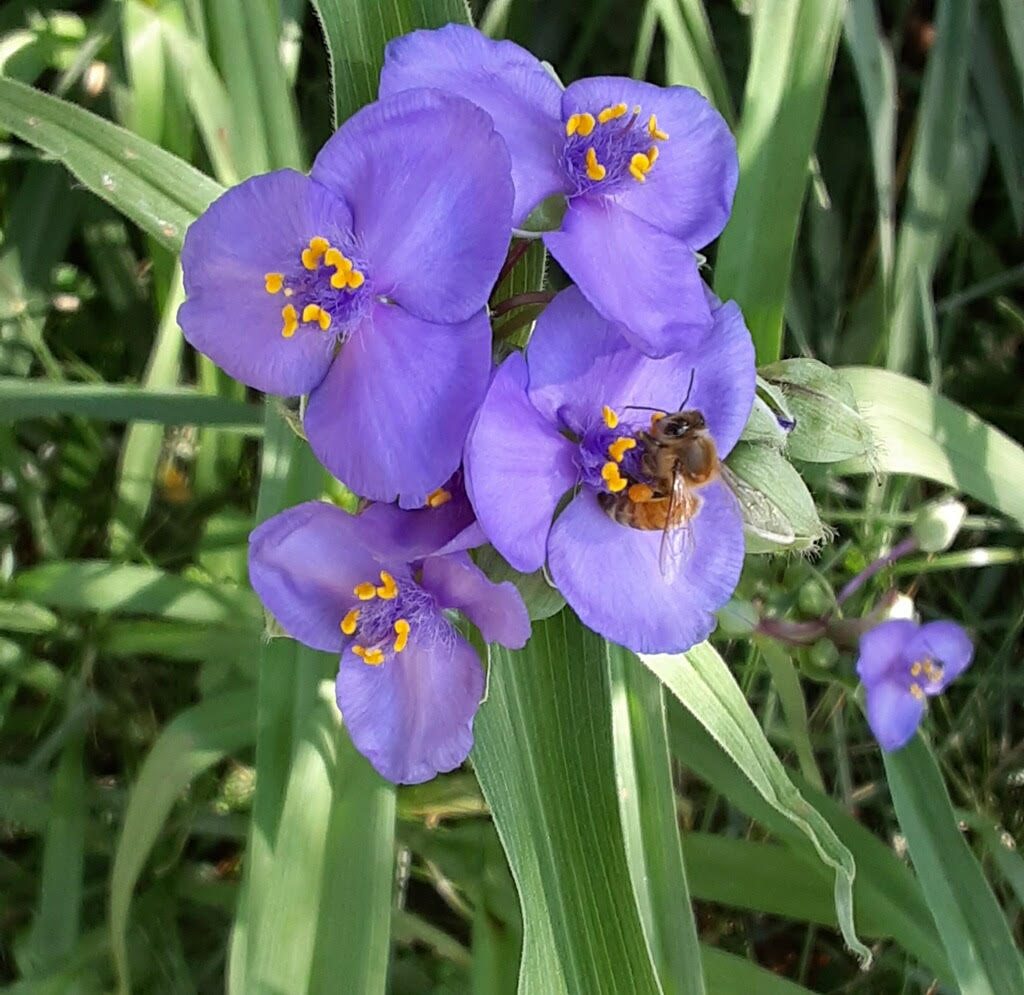By Susan Sprout
You may think of Spiderwort as just a plain, old, garden plant. But, it has quite a story. Spiderwort, or Tradescantia virginiana, is a plant for all continents! It is native to the Americas from southern Canada to Northern Argentina and the West Indies and has become naturalized in regions of Europe, Asia, Africa, and Australia.

Its genus name Tradescantia was given to the plant in honor of father and son, John Tradescant the Elder (born c.1570) and John Tradescant the Younger (born 1608). They were both plant-loving naturalists, gardeners, collectors of seeds and bulbs and oddities, and travellers to three of the four continents known during their lifetimes. They were not above asking friends from the American colonies, like John Smith, to gather and send back to England plant specimens for their own personal use as well as to use in their jobs as head gardeners on properties owned by King Charles I. John the Younger, who grew twice as many species as his father, made at least two collecting trips to Virginia for plants. Their combined books and collections of rarities have become part of the Ashmolean Museum at Oxford.

The “wort” part of Spiderwort’s common name comes from an Old English or Anglo-Saxon word spelled “wyrt” or “weart” which means plant. The “spider” part is a bit more interesting! Some writers refer to the spidery quality as coming from the long, pointed, opposite leaves hanging from tubular sheathes that hug the stems. Their weight bends them over, giving them a leg-like appearance. But, if you look closely at one of the three-petaled flowers (I used a magnifier) you can see the real reason. There, in the center, are six pollen-bearing, yellow stamens nestled in a delicate spider web of filaments surrounding them. How neat is that?
As it grows, this plant forms terminal clusters of hair-covered buds which open to become flowers ranging from blue to purple. Another identifying characteristic of Spiderwort are the two pointed, opposite leaves extending out from directly beneath the bunches of flowers and buds. Seed capsules formed after pollination will split open to dispense two or more seeds. Spiderwort is a perennial that also spreads by underground stems creating clumps. They can appear in the wild near stream banks, in woodlands, on hills. They grow well in partly shaded borders along roadsides, too.

There are eighty-four different species of Spiderworts besides ours in the world. Their plant parts have been used in salads and made into tea. Flowers, once dried and powdered, were used to treat bleeding noses by snuffing it in. Their most surprising use that I discovered while reading has to do with those spider-webby blue hairs in the flower. Their cells are sensitive to sources of high energy ultraviolet radiation like gamma rays and will mutate and turn pink! They can also detect pollutants like sulfur dioxide. Amazing and not just your plain, old, ordinary garden plant!


Wow! Who knew? I have spiderwort all around my patio and it’s slowly making its way to the front of the house. Very pretty all summer. Thanks for the article!